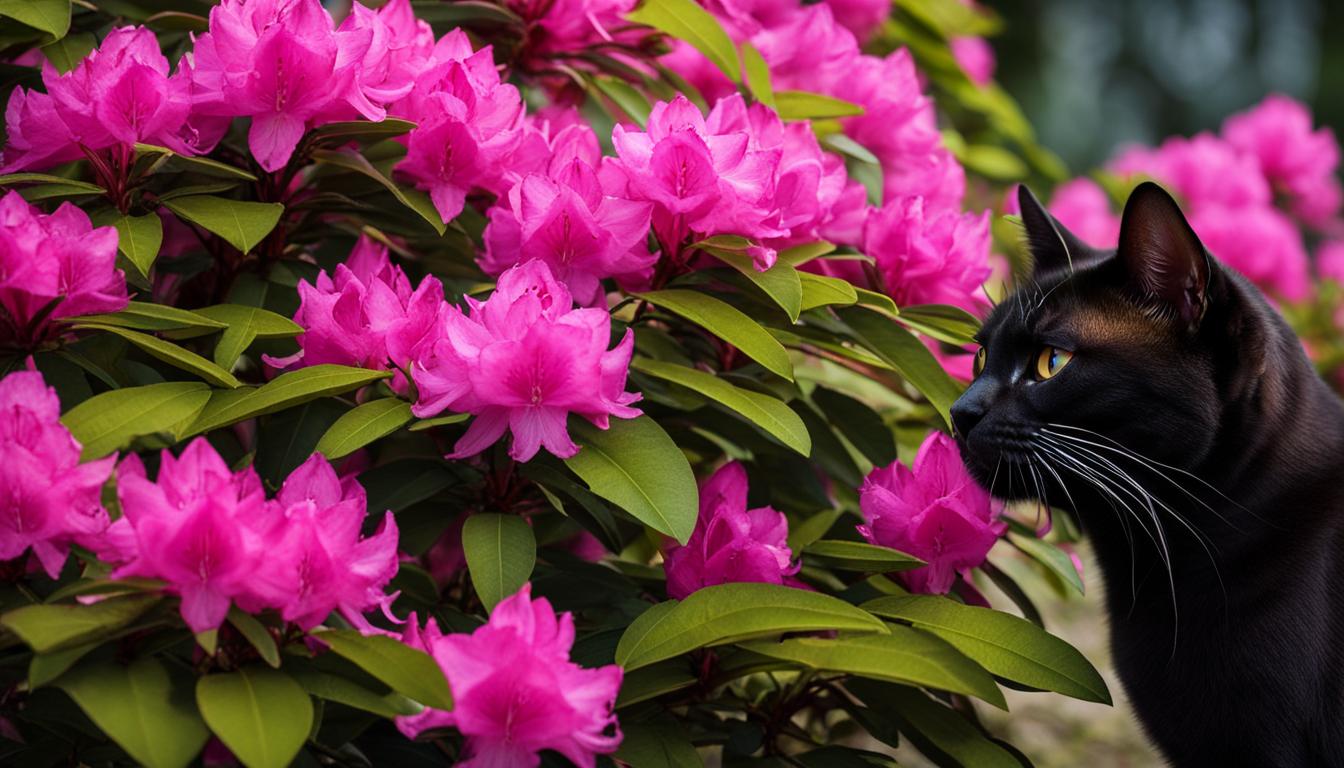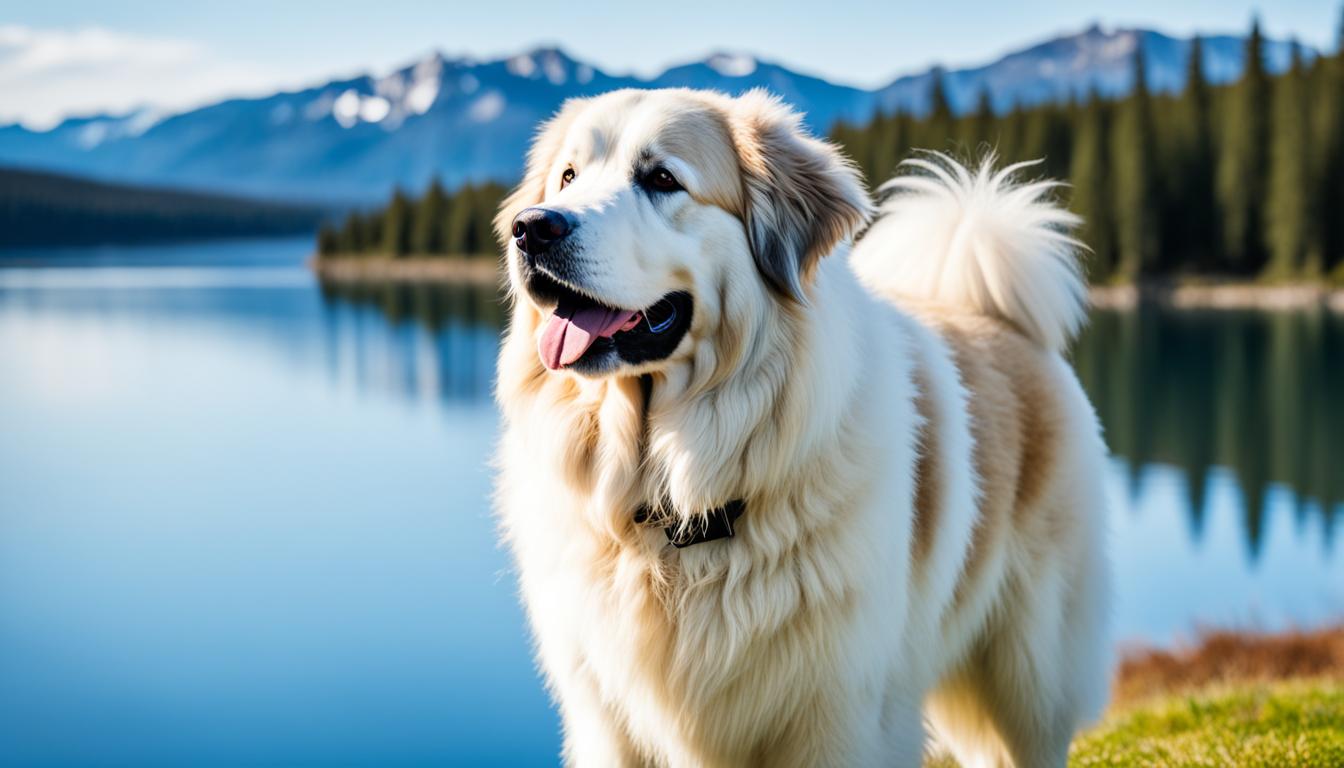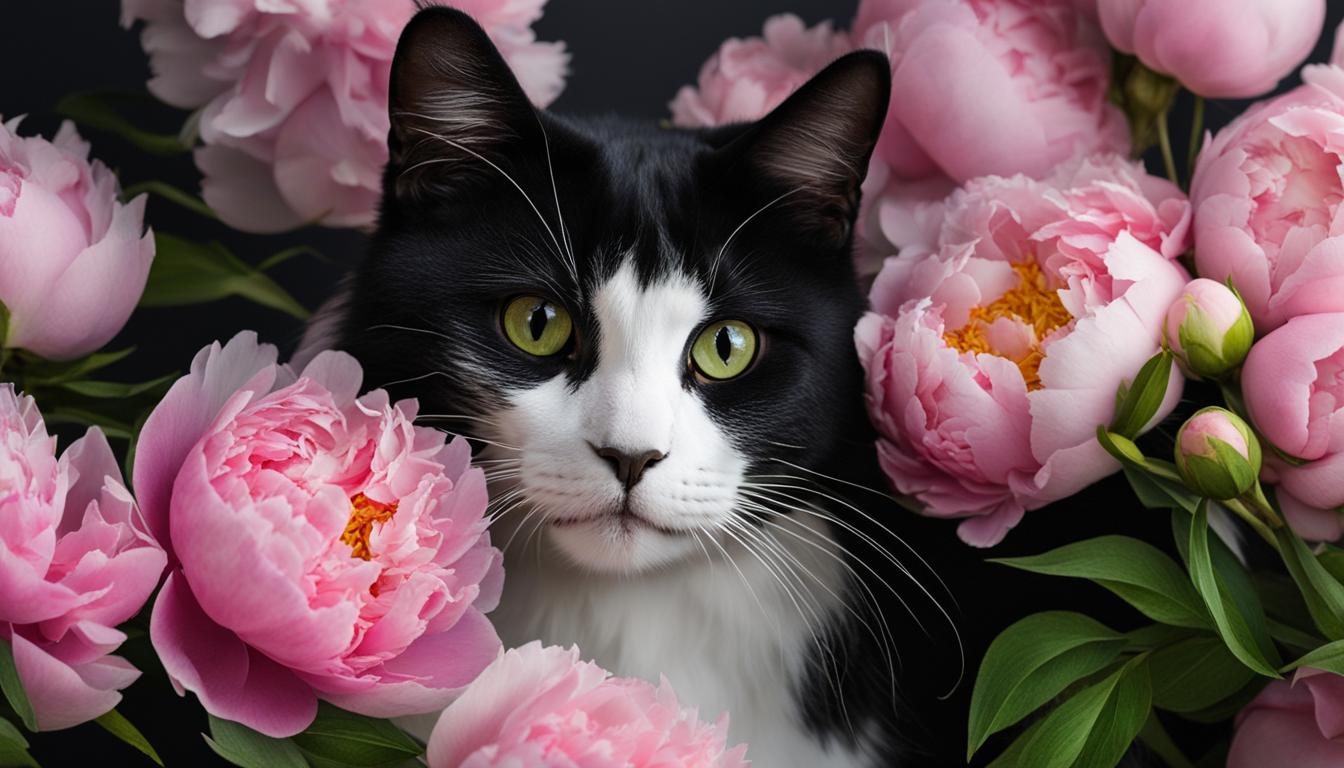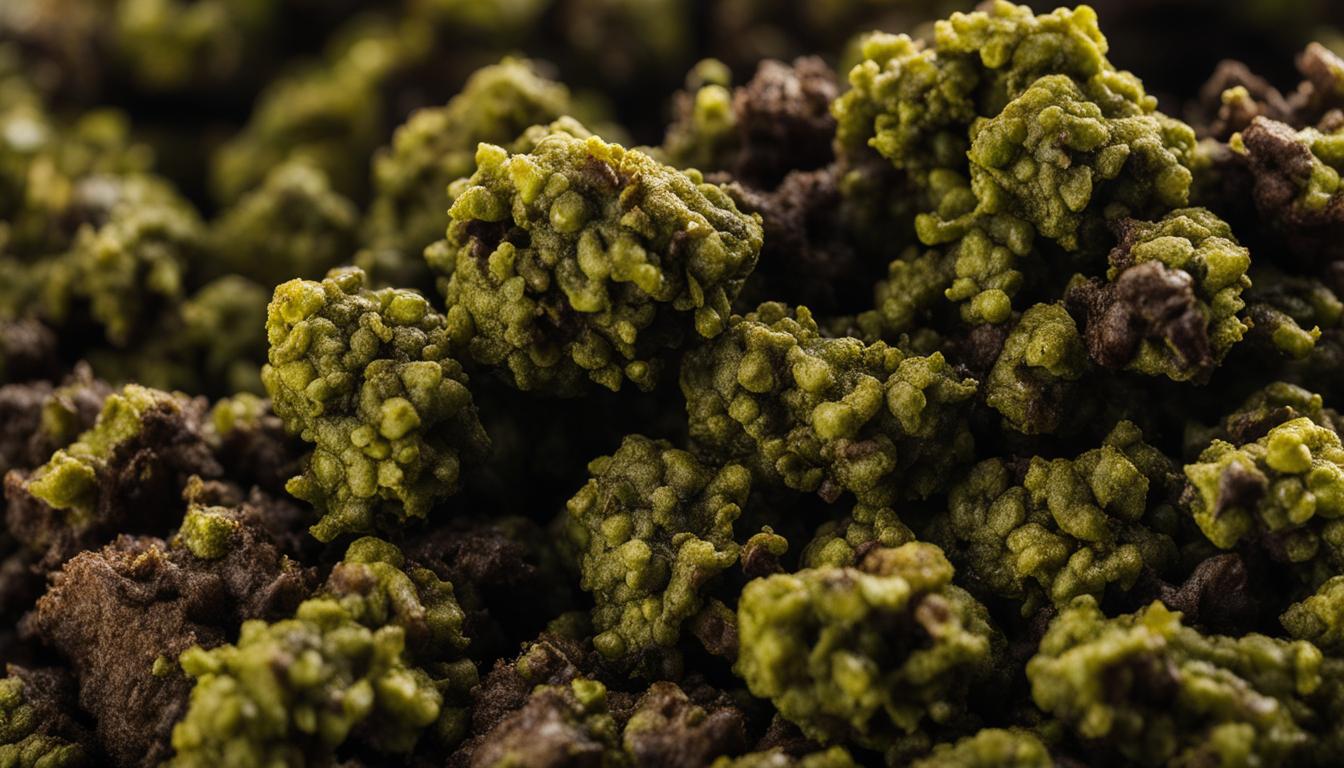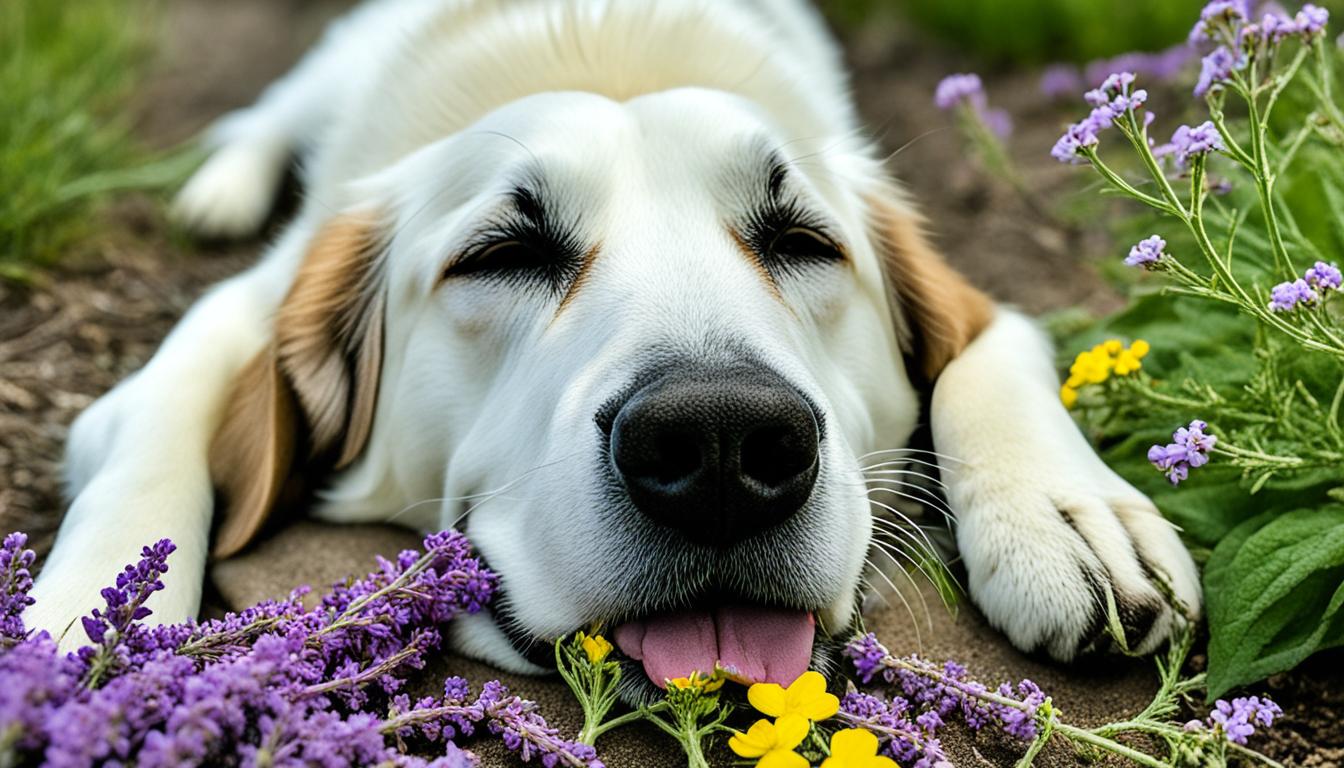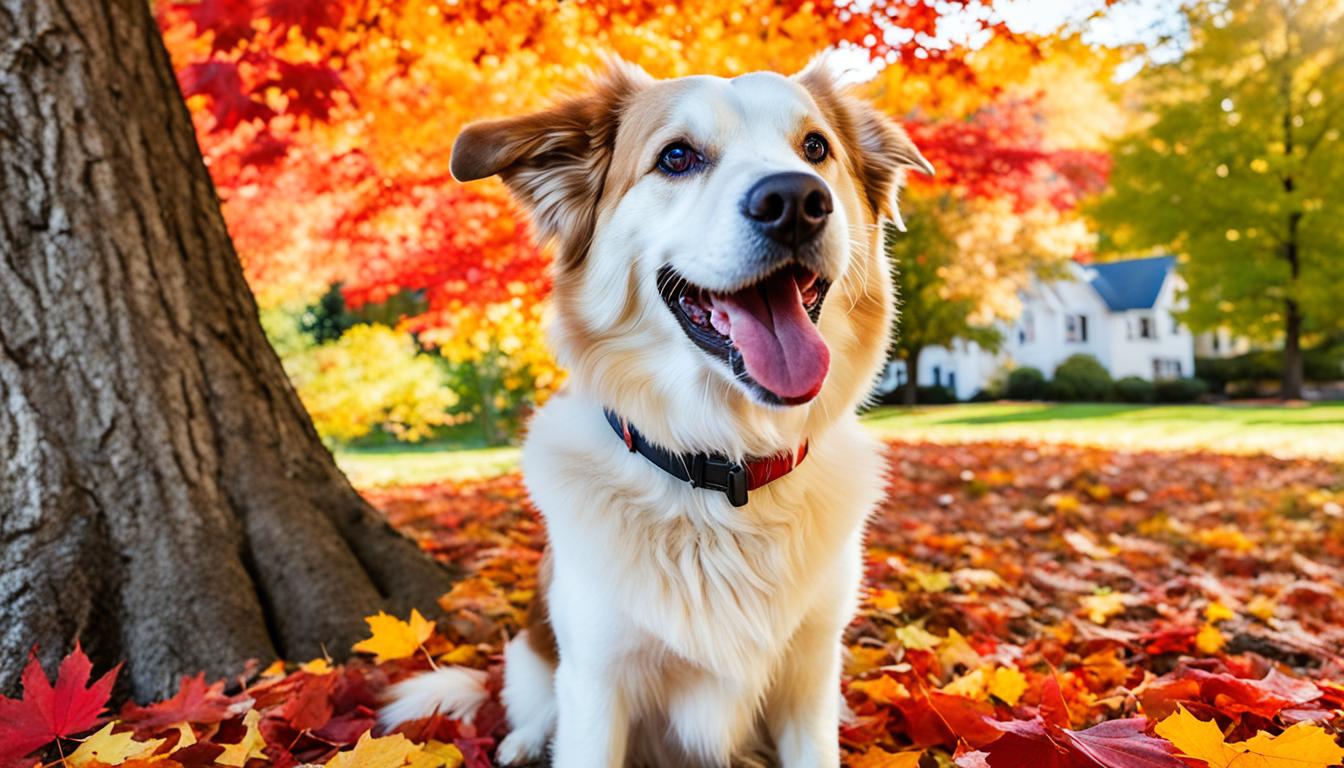As we treasure the lush greenery and vibrant blooms across our British gardens, the hidden dangers that some plants, such as Rhododendrons, pose to cats must not be overlooked. The question – are Rhododendrons poisonous to cats – bears significant importance for pet owners who wish to ensure the safety of their feline companions. It turns out, these ornamental shrubs do carry the potential for Rhododendron toxicity in cats. Notable for their toxicity, Rhododendrons should be approached with caution when cats are part of the household.
This foliage, though a beautiful addition to the garden, represents a serious threat when it comes to Rhododendron poisoning in cats. Immediate veterinary attention becomes essential if a cat exhibits signs of illness after encountering these plants. To foster a secure and nurturing environment for our pets, one must be informed about the safe plants for cats and the dangers of Rhododendrons for cats.
Key Takeaways
- Understanding the risks associated with Rhododendron ingestion is vital for cat safety.
- Rhododendrons contain toxins that can cause serious health issues in cats.
- Quick recognition of poisoning symptoms is key to ensuring your cat’s well-being.
- Knowing which plants are safe can help create a pet-friendly garden space.
- Immediate veterinary care can greatly increase the chances of recovery from poisoning.
Understanding Rhododendron Toxicity in Cats
The allure of Rhododendrons in gardens belies a hidden peril for cats, as every part of these shrubs can compromise feline health. A comprehensive understanding of Rhododendron and feline toxicity is necessary to protect your feline from Rhododendron-related risks.
Identifying Toxic Rhododendrons and Their Poisonous Parts
With the entire Rhododendron plant being hazardous to cats, it’s imperative to recognise the parts that pose a threat. These include:
- Leaves
- Flowers
- Nectar
- Pollen
- Stem and bark
The primary substance responsible for the toxicity is grayanotoxin, known for triggering a cascade of severe symptoms in cats, even in minuscule quantities.
Symptoms of Rhododendron Poisoning in Cats
When ingested, toxic Rhododendrons evoke a range of symptoms signalling poisoning:
| Gastrointestinal Symptoms | Neurological Symptoms | Cardiovascular Symptoms |
|---|---|---|
| Vomiting | Leg Paralysis | Irregular Heart Rhythm |
| Diarrhoea | Weakness | |
| Excessive Drooling | Seizures | |
| Loss of Appetite | Coma | |
| Abdominal Pain |
Awareness of these symptoms of Rhododendron poisoning in cats can facilitate timely and potentially life-saving actions.
Immediate Actions if You Suspect Your Cat has Ingested Rhododendrons
If you suspect toxic Rhododendron ingestion in cats, prompt intervention is crucial. Here are the steps to follow:
- Remove any remnants of the plant from the cat’s mouth.
- Gently rinse the cat’s oral cavity with water.
- Contact your veterinarian immediately for guidance.
Treatment strategies upon veterinary consultation may include:
- Administration of activated charcoal to absorb the toxins
- Inducing vomiting to expel the plant material
- Providing intravenous fluids to support recovery
Immediate actions for Rhododendron ingestion in cats can significantly enhance the prognosis, underscoring the importance of preparedness in such emergencies.
Preventing Feline Exposure to Toxic Rhododendrons
Preventing Rhododendron exposure in cats is a crucial aspect of pet care that cat owners must not overlook. Rhododendrons, while aesthetically pleasing, embody a hidden threat to our beloved pets due to their toxic properties. To safeguard your cats, implementing robust safety measures is essential. Here are a few practical safety tips to protect cats from toxic plants:
- Evaluate Your Garden: Conduct a thorough inspection of your garden to identify any Rhododendrons. If present, consider their removal to eliminate any risk of exposure.
- Limited Access: Ensure your cats have no outdoor access to areas with Rhododendrons or similar toxic flora. Consider secure, cat-proof fencing or keeping your felines indoors as preventive steps.
- Create a Safe Outdoor Haven: If your cats do enjoy outdoor time, establish a safe, controlled environment such as a catio, where exposure to harmful plants is not a concern.
- Opting for Cat Safe Rhododendrons: While traditional Rhododendrons are hazardous, seek out non-toxic plant varieties that offer peace of mind and a touch of nature’s splendor.
The following table presents a selection of cat safe Rhododendrons and alternatives:
| Plant Name | Description | Notes on Safety |
|---|---|---|
| Scleranthus Biflorus | A moss-like groundcover | Non-toxic, offers a soft, green cushion that cats may enjoy lounging on |
| Haworthia | Succulent with a distinctive appearance | Safe for cats, adds a structural element to your garden without risk |
| Camellia | Flowering shrub with bright, vibrant blooms | Camellias are typically safe for cats and can mimic Rhododendron aesthetics |
| Calathea | An ornamental plant with variegated leaves | While more of an indoor option, it’s completely safe for felines |
It is important for cat owners to be vigilant in identifying potentially toxic plants and prioritize safety tips to protect cats from toxic plants. By creating an environment free of these dangers, you ensure your cat’s well-being while still enjoying the beauty that flora has to offer.
Are Rhododendrons Poisonous to Cats: The Vet’s Perspective
With Rhododendron toxicity in cats being a subject of growing concern, veterinary insights on Rhododendron risk to cats are more valuable than ever. Experts in veterinary medicine have found that education and understanding of Rhododendron and cat health are pivotal in preventing serious health issues caused by these plants.
Veterinary Insights on Rhododendron and Feline Toxicity
Professionals emphasize that the entirety of the Rhododendron plant is harmful to cats if ingested, containing compounds that can disrupt feline cardiovascular function, nervous systems, and gastrointestinal health. Immediate action and thorough education on cat-safe flora are crucial in maintaining a home free of such toxic risks.
Treatment Protocols for Rhododendron Poisoning in Cats
In cases of Rhododendron exposure, emergency treatment for Rhododendron poisoning in cats is employed, consisting of decontaminating the gastrointestinal tract. Protocols include inducing emesis, administration of activated charcoal, and the provision of intravenous fluids to stabilise the patient. Cardiac monitoring is also an essential part of the treatment process, to manage any potential complications.
Long-Term Health Considerations for Cats Exposed to Rhododendron Toxins
Post-recovery, long-term health considerations for Rhododendron toxin exposure in cats demand vigilant observation. Follow-up assessments are imperative to evaluate the potential long-term effects on the cat’s health, with a focus on detecting any emerging cardiac irregularities attributable to the toxic encounter.
Conclusion
The well-being of our feline friends is of paramount importance, thus maintaining a safe environment for cats is essential. The dangers of Rhododendrons to cats have been thoroughly discussed, highlighting the critical need to prevent our beloved pets from coming into contact with these and other toxic plants. Mitigating these risks through actionable steps safeguards our pets’ health and our peace of mind as cat owners.
Maintaining a Safe Environment for Your Cat
Creating a secure and nurturing space for cats involves being proactive and vigilant. Understanding and eliminating the hazards posed by toxic plants such as Rhododendrons, ensures a sanctuary free from the threat of poisoning incidents. It’s not simply about removing the dangers but also about fostering an environment where our cats can thrive without the looming fear of toxicity.
Exploring Cat-Safe Alternatives to Rhododendrons in Gardening
Gardening enthusiasts need not compromise their passion while ensuring the safety of their cats. Exploring cat safe alternatives to Rhododendrons is an excellent approach, offering both aesthetic pleasure and a feline-friendly habitat. With a vast array of safe plants for cats available, gardeners can delight in the vibrant splendour of nature’s palette while preserving the well-being of their curious companions. Seeking advice from veteran horticulturists and veterinary experts can further supplement one’s knowledge with tailored recommendations suitable for both pet and plant lovers in the UK.
FAQ
Are Rhododendrons poisonous to cats?
Yes, Rhododendrons are highly poisonous to cats. All parts of the plant, including the leaves, flowers, and nectar, contain a toxin that can cause severe illness or even be fatal to felines if ingested.
What are the dangers of Rhododendrons for cats?
The dangers range from vomiting, diarrhoea, excessive drooling, and abdominal pain to more serious symptoms like changes in heart rhythm, seizures, and even death. Immediate veterinary care is essential if a cat has ingested any part of a Rhododendron.
How can I identify symptoms of Rhododendron poisoning in cats?
Symptoms include vomiting, diarrhoea, drooling, loss of appetite, weakness, leg paralysis, and more. Cats may also exhibit signs of distress or changes in behaviour. If any of these symptoms are observed after potential exposure to Rhododendrons, seek immediate veterinary assistance.
What immediate actions should I take if I suspect my cat has ingested Rhododendrons?
Remove any plant material from your cat’s mouth, rinse its mouth gently with water, and contact a veterinarian right away. Do not attempt home remedies or wait for symptoms to pass, as Rhododendron poisoning requires urgent medical attention.
How can I prevent my cat from being exposed to toxic Rhododendrons?
To prevent exposure, remove Rhododendrons from your garden, ensure your cat does not have outdoor access to areas with these plants, and consider cat-safe plants as alternatives. Creating a cat-friendly environment, both indoor and outdoor, is crucial for your pet’s safety.
What are cat-safe alternatives to Rhododendrons for gardening?
There are numerous non-toxic plants that cat owners can safely grow in their gardens. For cat-safe gardening options, consult local nurseries or your veterinarian for plants that do not pose a threat to your pet’s health but still provide beauty to your garden space.
What do vets say about Rhododendron toxicity in cats?
Vets consider Rhododendron toxicity a serious threat to cats. They emphasize prevention, prompt action in case of ingestion, and discourage planting Rhododendrons in households with pets. Professional guidance is advised when dealing with suspected cases of poisoning.
What are the treatment protocols for Rhododendron poisoning in cats?
Veterinary treatment may include inducing vomiting, administering activated charcoal, providing intravenous fluids, and monitoring the cat’s cardiac function. The specific treatment will vary based on the severity of the poisoning and the cat’s condition.
What are the long-term health considerations for cats exposed to Rhododendron toxins?
After recovery from Rhododendron poisoning, long-term health monitoring might be necessary. Follow-up appointments and vigilant observation for any signs of recurring symptoms are important, especially concerning the heart as the toxin can affect cardiac function.
What can I do to maintain a safe environment for my cat?
Ensure that your home and garden are free from toxic plants, like Rhododendrons. It’s important to research and be aware of common household and garden plants that could pose a risk to your cat and either remove them or prevent your cat’s access to those areas.
